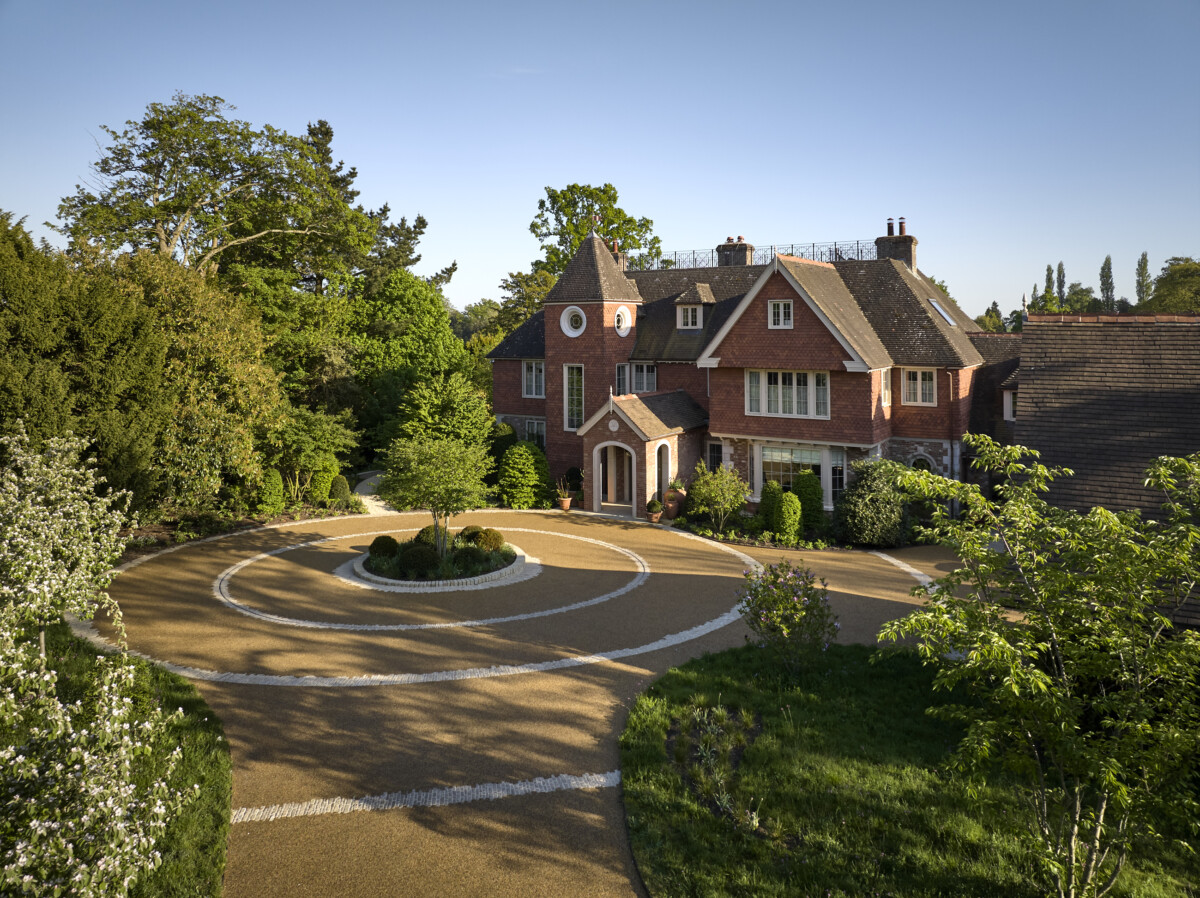Dumbarnie: It’s worth the wait: Scott MacCallum celebrates the opening – at last – of a fine addition to the long list of magnificent Scottish golf courses, uncovering American connections along the way…
There is a beach in Fife which is only really known by locals. Shell Bay, on the East Neuk of the Kingdom, doesn’t have the iconic status of the West Sands at St Andrews, but it does have all you would ever want from a beach.

Dumbarnie: It’s worth the wait
I know this because I was brought up not 15 miles away and spent the occasional sunny Sunday afternoon enjoying the delights of the beach.
But just between Shell Bay and the village of Lower Largo is a stretch of land, at one time unassuming fields occupied by cattle and sheep, which has just been turned into Scotland’s newest and most talked about golf course – a wonderful addition to the unbeatable stable of courses the Home of Golf has to offer.
Dumbarnie Links opened to the public in May and there can be noone prouder than Grahame Taylor, who has been with the project from the turning of the first sod. He was appointed Course Manager, initially being in charge of the “Seed in the Ground” contract, before taking on the day-to-day maintenance.
A born and bred Fifer, Grahame already had a stellar CV, containing the names Leven Links, Polaris WorldSpain, Gleneagles and The Old Course St Andrews. Then came along the amazing opportunity to be involved in a fantastic new project that could not be overlooked at Dumbarnie Links.
It was while at Leven that the jungle drums about a new course near Shell Bay started to beat a little louder, reaffirming a plan which had its origins back in the 1920s, and which had it come to fruition would have changed the landscape of Scotland’s hospitality and golfing sector.
The story goes that the Directors of Caledonian Railways were travelling through Scotland looking to identify a location for a fabulous new hotel they hoped to add to their property portfolio. They came up with two places, Dumbarnie and Gleneagles. It was the Perthshire site that was chosen and the iconic Gleneagles Hotel, with its wonderful Scottish Open, Ryder and Solheim Cup courses, was the result.
It may have taken a full century to do so but Dumbarnie is now fulfilling that potential.

Dumbarnie: It’s worth the wait
“I first learned that a golf course was being planned over 10 years ago when I heard that the land had potential for golf,” explained Grahame, as we spoke in his superb new maintenance facility, full of brand new John Deere kit, supplied by Double A, based not far away in Cupar.
What had put the spark back in the plan was down to an old boss of mine. Malcolm Campbell, a former Editor of Golf Monthly magazine and a highly respected golf writer, lives close by and had, like Caledonian Railways, known for some time of the golfing potential of the land. Close friends with former Ryder Cup player, Clive Clark, now golf course architect, based in the United States, Malcolm tipped Clive off about the site, and he became equally enamoured.
A consortium was put together and the land, part of the 5,000 acre Balcarres Estate, was purchased from Lord Balniel. Planning for the new course was approved in 2017.
Remarkably, the construction and overall management was and is conducted by American companies – Nebraska-based Landscapes Unlimited constructed the course and it is operated by OB Sports Golf Management, which is based in Scottsdale, Arizona. It was designed by Clive Clark who was on site for the construction phase and had Paul Kimber also on site throughout as Project Manager.
“I think they wanted someone with a lot of Links golf experience and ideally a local guy to manage the course and I’d been at Leven for 10 years, had Open and Ryder Cup experience and was also very experienced in irrigation,” explained Grahame.
His boss is Luke Beardmore, Senior Vice President of Agronomy, Construction and Landscape with OB Sports Golf Management.
“Luke interviewed me on site, and we have built a great working relationship, even though he is 5,000 miles away. We speak every day, either by phone, Zoom or Facetime.
I feel really privileged to have such a great working relationship. Luke is an agronomist and has grown-in around 30 golf courses. OB Sports have been a fantastic support for me on site.”
Turning bland fields into a characterful golf course is no mean feat but in the case of Dumbarnie, in part due to the dry summer of 2018, it was constructed in a remarkable 12 weeks – the first sod was turned on June 1, 2018 with the final green seeded on October 8th.
“Shapers, four of them, were brought in from the States and the site was swarming with 30 tonne dumper trucks and dozers. They moved 600,000 cubic tones of dirt and in doing so created a dune-scape indistinguishable from the land which previously existed,” revealed Grahame.

Dumbarnie: It’s worth the wait
With the construction moving at such a pace it would have been easy for Grahame to lose focus, however taking one day at a time and staying organised was key to a successful day.
“To be on site from day one was very important to see where everything from drainage to irrigation is going in the ground.
Working as one team with Clive and Paul was a good opportunity to put forward my views on any contours that would affect the maintenance of the course moving forward, Clive would sometimes ask me ‘Is it maintainable?’” said Grahame.
“If they perhaps needed a slight tweak they could be softened off a little. It was quite straightforward and the consultation worked well.”
The areas in which Grahame’s views were considered most valuable where in ensuring there were sufficient pin positions on greens and would fairway mowers cope with some of the undulations the shapers had created.
When it came to the seeding of the greens and surrounds Grahame and his team took it upon themselves to complete the job and were delighted with the results.
“It is important that you get it right the first time as you get one shot at it.” Barenbrug supplied the seed. The greens and surrounds were fescue – chewings and slender with a very small percentage of Charles bent.
“I asked for some bent as it gives us a little more scope as there would otherwise be a greater risk of balls oscillating in high winds. In terms of wear having a bit of bent in there gives you more options.”
Those winds were such that they did cause issues during the grow in, a problem caused by the fact that the dunes were brand new and initially didn’t have anything to bind them together.
“The dunes were all hydro seeded but had no irrigation, so you were left hoping that nature would provide some rain to germinate the seed before the winds arrive in the spring,” revealed Grahame, adding that the course had wall-to-wall Toro irrigation, which offers him excellent control.
Unfortunately some winds did prove to be an issue in the spring of 2019 and, despite miles of fences, and piles of pallets, acting as wind breaks, Grahame and the team would come in and discover entire fairways were buried in up to four inches of sand.
In his own words, “It was a like a war zone out there at times” sums up the scene after the winds had done their damage.
“The fescue was at a young stage and any amount of brushing the sand off was not ideal.”
This was the toughest spell during the grow-in phase for the agronomy team. “I have a fantastic team who I work alongside with who gave everything to the course during that difficult spell.”
“Take one day at a time and feel like you have won the battle when you head home. The next day is a new set of challenges to overcome. There is always a solution, you just have to find it.” His philosophy during the growin period was to be aggressive from the start in terms of agronomy.
“There is no point in pussy-footing around. You have to take control right from the beginning, or you will get beaten up. I always went with my gut instinct and stuck to that, if you are second guessing yourself you are not going to win the battle.”
The course itself is stunning. Designed to be an enjoyable round for most standards of golfer the length is a spread from 5,334 yards, off the front tees, to an eye-watering 7,620 yards from the Championship tips. That would even have Bryson DeChambeau reaching for a mid-iron occasionally and perhaps hints at longer term ambitions for the course.
One of the features of the course, which is already adding to the flora and fauna on the site, is the bunkers. Half of them are beautifully revetted, while the other half are described as natural. “The revetted bunkers, 72 of them, are actually Eco Bunker, with layers of astroturf. You’d never know and they have turned out magnificently and Richard Allen has told us that they will stand for 25 years.
“We keep the natural bunkers clear by hand weeding them,” explained Grahame, whose team has grown from 11 during the grow-in to 18 now, including South African Deputy Course Manager, Era van Zyl, who joined Grahame from the Castle Course, in St Andrews.

Dumbarnie: It’s worth the wait
Covid-19 has had an impact on Dumbarnie, although the opening only slid by a fortnight from the original date of May 16.
“At that point we were still aiming to have the course ready and, while we knew it was struggle for some of our suppliers, we were working towards that date without easing off.
“The thing that sticks in my mind about lockdown was that we were on a hectic schedule to get the clubhouse finished and we thought it was achievable. There were 40 to 50 people working on the clubhouse pushing hard… and the next day everyone left. It was a very eerie feeling. All my guys had cut back on their hours and it was just Era and myself sometimes. I cannot thank Era enough for his dedication. It was a very strange feeling. We just did not know what was going to happen,” recalled Grahame.
“My main concern was the guys’ health. You have to look after your team. When we started to come back, I split them into smaller groups and they were doing essential maintenance and then going home for the day.”
Speaking in September with a temporary car park packed, a clubhouse, which has been designed to look like two converted barns due for completion within a few weeks, and rave reviews for the course, Grahame could not be more pleased.
“I’m incredibly proud. Our international bookings have understandably been cancelled but many have rescheduled, while we have been full with Scottish residents playing, many of them coming back two three or even four times.
“I am honoured to be Course Manager at Dumbarnie Links. It has been a joy to be involved here from the start and I haven’t looked back. I never planned out my career. If a chance comes along you just have to have the courage to take it.”
And take it he has. You can be sure that now that Shell Bay shares its space with a world class golf course it will no longer be just the guilty secret of the Fife locals.


























